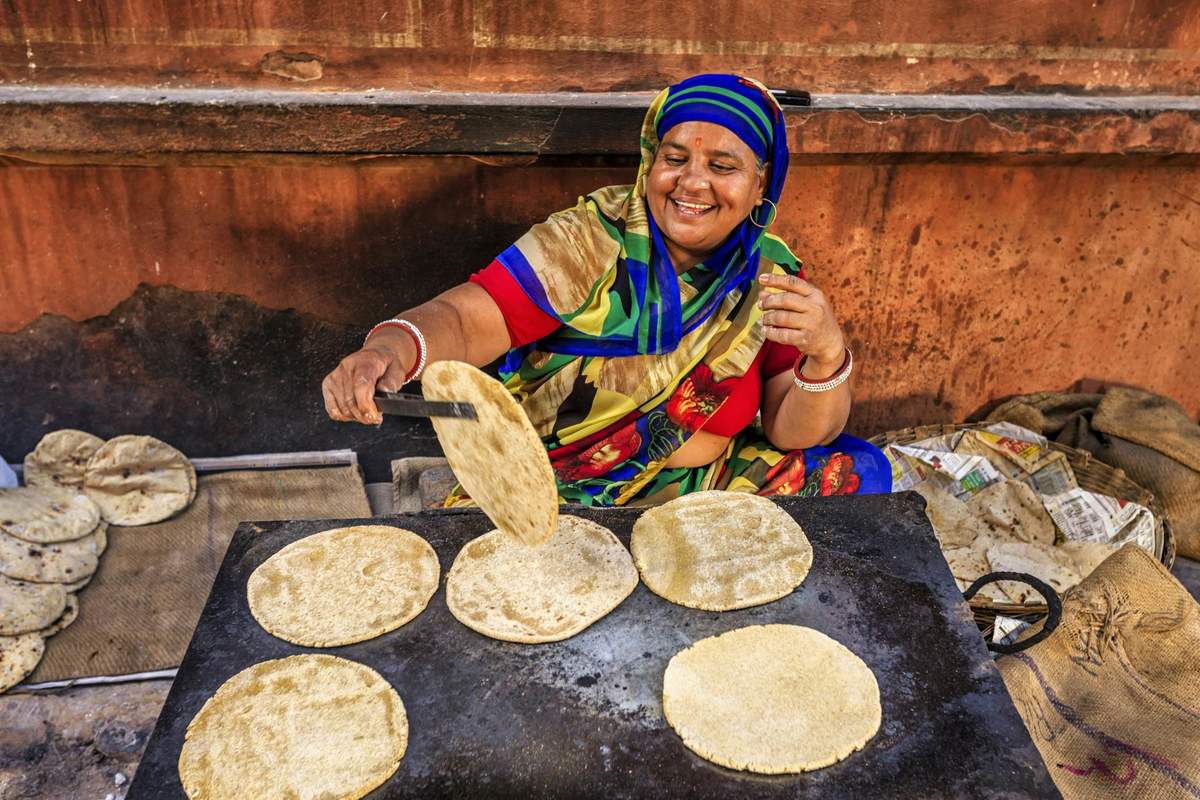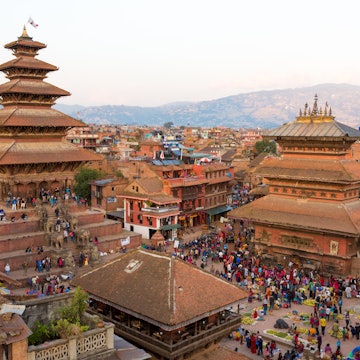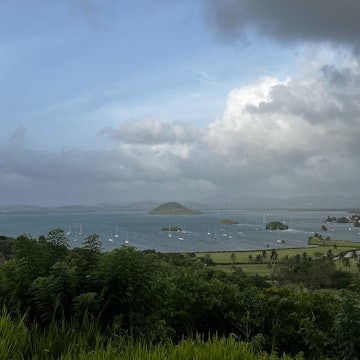

Celebrating Diwali in Varanasi, India. Itiprithul/Shutterstock
Picture rows of oil lamps twinkling in the night and pathways adorned with rangoli, intricate patterns made from flowers and colored chalk. Firecrackers burst, painting patterns in the darkness.
This is Diwali (or Deepavali), the Festival of Lights, which is one of India’s most prominent annual observances. It is marked in different ways across the country to symbolize the triumph of good over evil. For Hindus, the festival celebrates the return of Lord Rama after 14 years of exile, following his victory over Ravana, the demon king of Lanka, and Lord Krishna’s victory over the wicked demon Narakasura.
Diwali is an especially wonderful time to visit India. Light forms a vital part of the celebrations, as landscapes get illuminated by millions of lanterns, diyas (oil or ghee lamps), candles and firecrackers, symbolizing the light used to guide Rama home to Ayodhya. The lights are also believed to help lead Lakshmi, the Hindu goddess of wealth, into people’s homes.

Diwali festivities begin on October 20 in 2025 and November 8 in 2026. The celebrations typically last for five days and include pujas (ceremonial rituals), music and dancing, gifts of sweets, and even card games. In bigger cities, special cultural programs, processions and community gatherings take place.
In India, Diwali is also celebrated by Sikh and Jain communities. For Sikhs, the festival commemorates the moment when Guru Hargobind Singh was released from Gwalior Fort, where he was imprisoned by the Mughal emperor Jehangir. Jains celebrate the moment when Lord Mahavira, the 24th tirthankara (great teacher) of the Jain faith, attained moksha – liberation from the cycle of life and rebirth.
Keen to join in the celebrations? Whether you’ll be in India or elsewhere in the world, you’re in luck, as Indian communities have spread Diwali traditions across the globe.
Here are the best spots to celebrate Diwali.
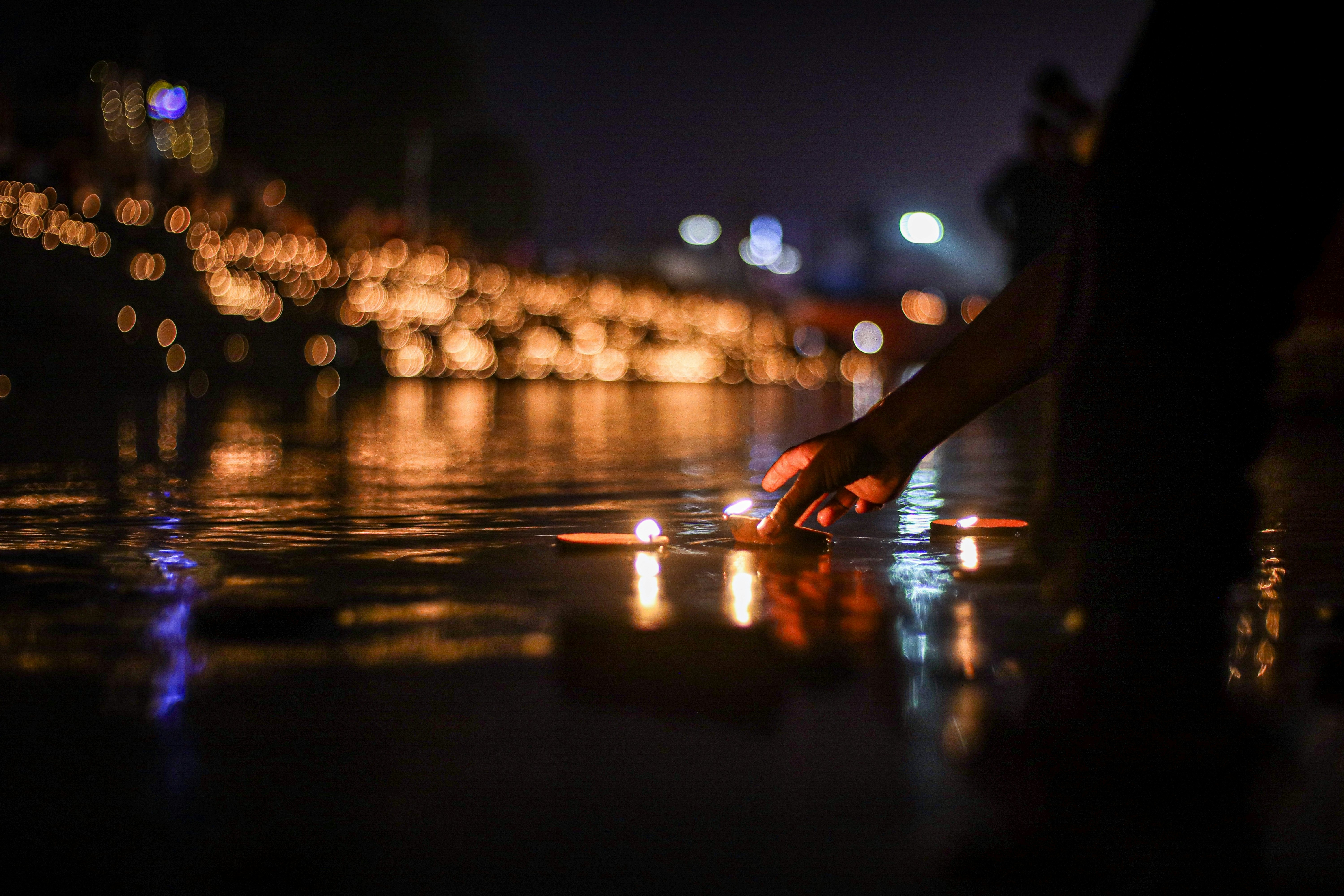
Where to catch the festivities in India
Diwali in Ayodhya
Ayodhya is considered to be the birthplace of Lord Rama, and Diwali is an amazing spectacle in this holy city. Millions of earthen lamps, diyas and candles light up the ghats beside the Sarayu River. All over the city (most prominently at Ram Katha Park and Ram Ki Paidi), performers reenact moments from Lord Rama’s life in a spectacle known as Ramlila.
The city’s ghats (riverside steps), meanwhile, come alive with aarti (fire rituals) followed by fireworks. Ram Katha Park and Sarayu Ghat host devotional and cultural programs, and there’s a procession featuring a tableau from the Ramayana (one of the great Hindu texts) on the day of Diwali itself.
Diwali in Kolkata
In the capital of West Bengal, people pray to Kali, the Hindu goddess of destruction, as part of Kali Puja, which takes place on the day of the new moon. Marking the victory of Kali over the demon Mahishasura, the festival sees the erection of elaborate pandals (marquees) containing statues of Kali, which are open for devotion and often include performances and food for devotees. Thousands of people line up to express respect for the goddess at Kalighat Temple, Belur Math and the Dakshineswar Temple. Kali Puja comes just a few weeks after Durga Puja, another huge event in the Bengali calendar.

Diwali in Varanasi
India’s spiritual capital is a special place indeed to celebrate Diwali. The biggest event here is Dev Diwali, celebrated 15 days after the main Diwali celebrations (the festival moves with the lunar calendar, falling on November 5 in 2025 and November 24 in 2026). During the Dev Diwali festivities – which commemorate the victory of Lord Shiva over the demon Tripurasura – the city and its many ghats transform into a symphony of lights, chanting and color. Diyas are gently floated onto the waters of the Ganges, and evenings see processions of deities from different city temples, before people gather by the ghats to observe the famous ganga aarti ceremony. Festivities also include shows by folk artists and musical performances across the city.
Diwali in Amritsar
The spiritual heart of the Sikh religion is the city of Amritsar in Punjab. For Sikhs, Diwali marks the foundation of the holiest Sikh shrine, the Golden Temple, and the release from imprisonment of the sixth Sikh guru, Guru Hargobind. For this reason, Diwali is celebrated as Bandi Chhor Diwas (Prisoner Liberation Day). The Golden Temple is the locus of the festivities, with the Amrit Sarovar pool that surrounds it brilliantly illuminated by lights dotting its surface. There are prayers, devotional hymns and processions, and tens of thousands of devotees join in a vast community meal at the langar (communal kitchen).

Diwali in Goa
One of the most striking Diwali traditions is the burning of effigies of Narakasura to signify the destruction of evil. Young people from different villages in Goa get together to construct these creations, which are intricately made and often tower into the sky. On the night of Naraka Chaturdashi, the effigies are burned, accompanied by the noisy exploding of firecrackers. Competitions take place throughout the state to see who can build the most impressive sculptures – some even show the whole scene of Lord Krishna’s killing of Narakasura.
Diwali in Odisha (Orissa)
In the eastern state of Odisha (Orissa), Diwali celebrations take place much same as in other states – with one notable exception. Bada Badua Daka is a tradition in which people pray to their ancestors. On this day, Odishans gather in front of the famous Jagannath Temple in Puri, burning kaunriya kathis (jute sticks) and pointing them toward the sky to call on their forefathers for blessings.
Diwali celebrations around the world
Indian travelers and those of Indian descent have spread Diwali traditions across the planet. Here are some of the best places to mark Diwali outside India.
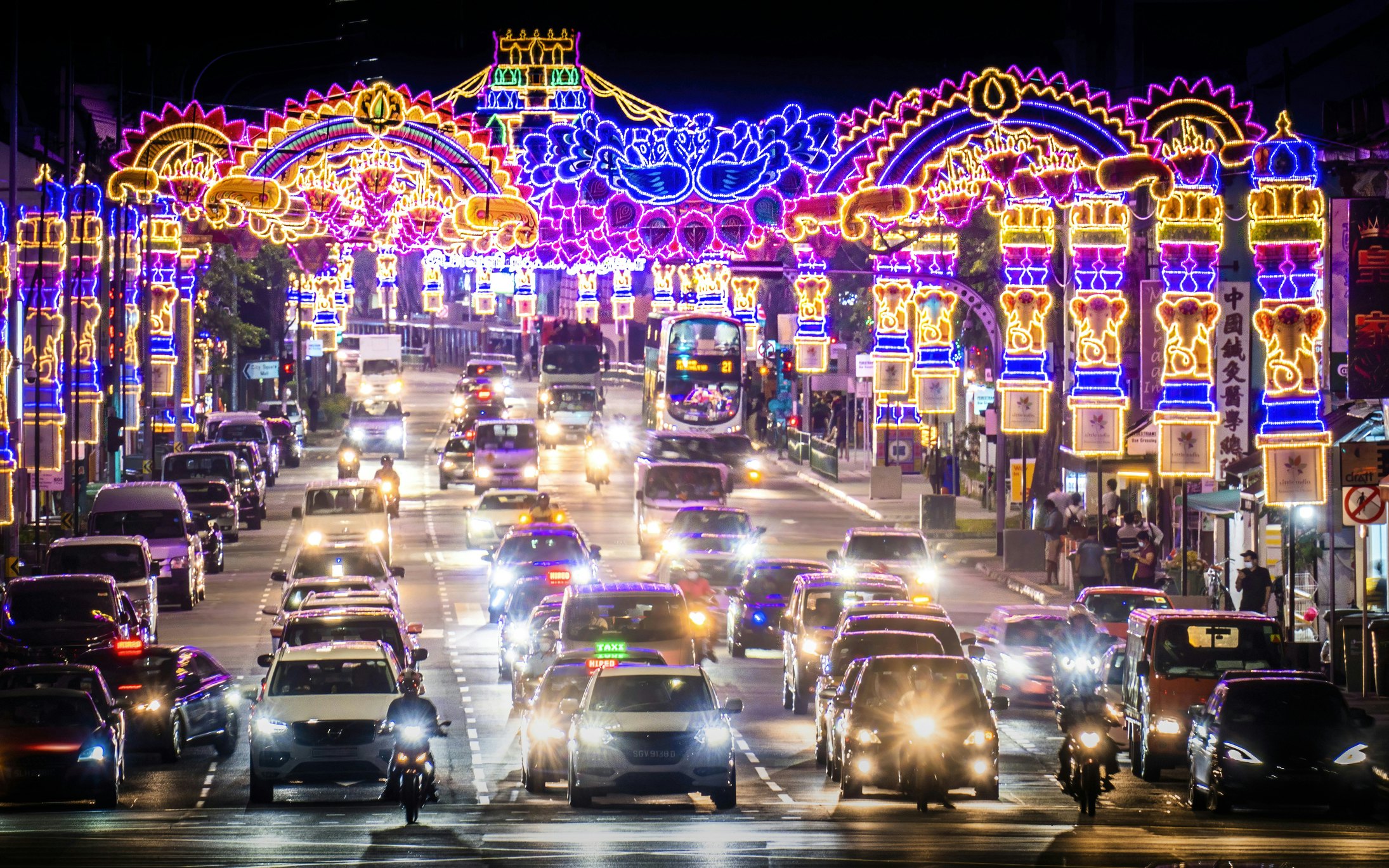
Diwali in Little India, Singapore
The colorful suburb of Little India in this island city gets a major makeover during Diwali. Celebrations begin long before the festival, when the streets are illuminated by festival lights. (There’s an annual theme for the light displays; for 2025, it's “Aattam Pattam Kondattam” – or ”Dance, Kites, Celebration.”) For the main event, the Little India Shopkeepers and Heritage Association (Lisha) organizes cultural programs, walks and tours to spread the message of the festival, alongside cooking demos, a treasure hunt, special Big Bus tours, workshops and the construction of a bustling, stall-filled Deepavali Festival Village.
Diwali in Fiji
In the Pacific island nation of Fiji, Diwali has been celebrated since 1879, when Indians first arrived in the country as indentured laborers under British colonial rule. Diwali is a national event and a national holiday in Fiji, and celebrations are no longer limited to the Indo-Fijian community. Islanders from all backgrounds light diyas and candles, accompanied by feasting and fireworks. In the capital of Suva, cultural performances take place in a bustling market, while the streets and temples of Nadi and Lautoka come alive with lights and rangoli patterns.

Diwali in Trafalgar Square, London
Trafalgar Square in London is the venue for one of Europe’s biggest Diwali celebrations. This free event is co-organized by the Mayor of London and the Diwali in London committee, and typically includes workshops, music and dance performances, and other activities that provide a lively initiation into bits of Indian culture. The 2025 event will provide a “glimpse of goddesses” – namely Lakshmi and Saraswati – and feature dance performances and hands-on activities. You can also learn how to tie a turban or drape a sari, explore spiritual and children’s zones, practice yoga and play kho kho (a similar game to tag).

Diwali in Leicester, UK
The city of Leicester in England hosts one of the biggest Diwali celebrations outside India. The focus of the activities and events is Belgrave Road, colloquially dubbed the “Golden Mile.” Expect processions of street performers and the annual appearance of Leicester’s “Wheel of Light,” a festive Ferris wheel.
Diwali in Melbourne, Australia
Diwali is celebrated on a grand scale in Indian-dominated districts in Melbourne and Sydney in Australia. The grandest of these celebrations is held at Melbourne’s Federation Square, presented by Celebrate India. The day-long festivities include music, dance performances (ranging from classical and folk dance to Bollywood movie dances), a bazaar, Indian street food, circus acts, fireworks and craft and painting workshops.
Diwali in Chaguanas, Trinidad and Tobago
The nine-day Diwali celebrations are a significant cultural event in the island nation of Trinidad and Tobago, and its large Indian-descended community. The National Council for Indian Culture (NCIC) hosts the Diwali festivities at Divali Nagar, built across 27 acres in the town of Chaguanas. Celebrations include daily song and dance shows, folk art performances, contests, markets selling Indian clothes and a food market with Indian and Indo-Trinidadian foods.

Diwali in Kuala Lumpur, Malaysia
Diwali is known as Hari Diwali in Malaysia, with the festival a holiday in most parts of the country. Little India in the Brickfields neighborhood of Kuala Lumpur is the place to go if you want to plunge into the festivities. A market sells traditional Indian decorative and festive items, restaurants offer special menus, and lively firework displays explode come dark. You’ll also find crowds of devotees worshiping at the Sri Maha Mariamman Temple and Batu Caves.
Diwali in Jaffna, Sri Lanka
In Sri Lanka, Diwali is celebrated most enthusiastically in Jaffna in the far north, a major center for the Tamil community. Celebrations are more restrained than in some other places, and tend to focus on family homes and kovils (Hindu temples), most notably the Nallur Kandaswamy Kovil.
People start cleaning their homes weeks in advance as part of a ritual known as suthu kandu. For the festival itself, families decorate their dwellings with diyas and set off firecrackers. Keep an eye out for traditional sweets and festival foods such as pongal rice and paniyaram – nutty, deep-fried balls of rice flour, gram flour, toasted coconut and jaggery (palm sugar).






